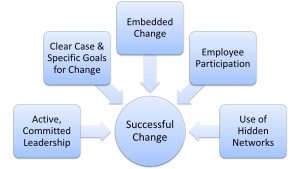Change Leadership Checklist
It's a holiday week in the US so, for this blog post, here's a gift: a downloadable checklist to help you think through your next change effort. Happy holidays!
So much needs to be done when planning a change—and that’s just the work around creating the new product, process, or solution. Organizations that wish to be successful must deal with the human aspects of change leadership and help people make the transition from the old to the new. Change leaders need to answer key questions in each phase before moving on to the next. Use this simple checklist to see if you've answered the important questions about your next change initiative.












